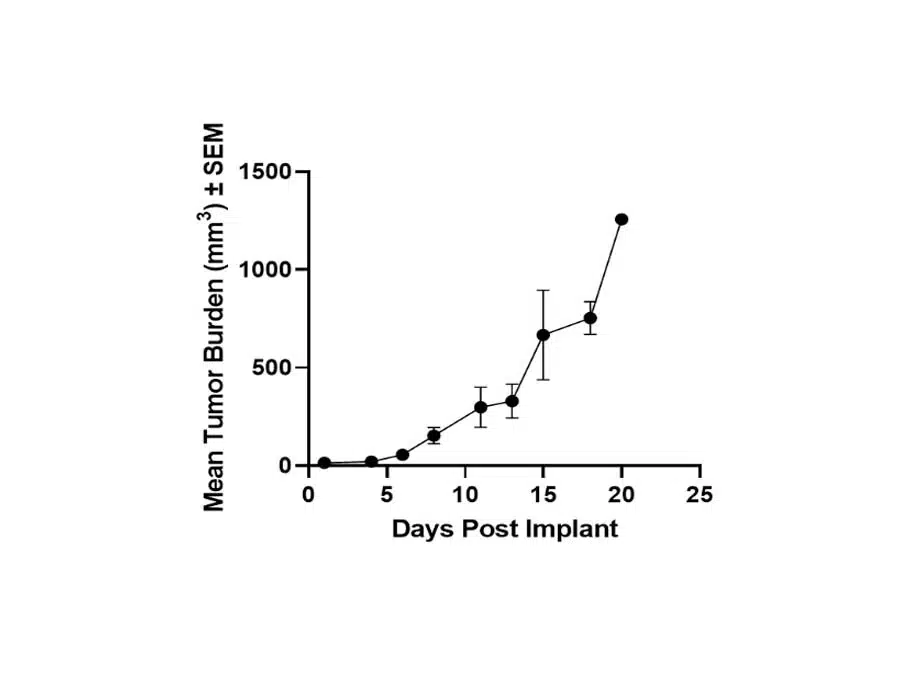
LL/2 is a mouse Lewis lung carcinoma, originally derived from a spontaneous epidermoid carcinoma in a C57BL mouse in 1951. LL/2 has extensive applications as a syngeneic tumor model for immunotherapies.
Metastatic potential
This cell line is highly tumorigenic but weakly metastatic in mice. Subcutaneous implantation methods in C57BL mice have shown subcutaneous tumor formation along with limited lung metastases.
Immunogenicity
This tumor type is unlikely to trigger a T-cell immune response, an advantageous characteristic for developing treatments for patients unresponsive to contemporary immuno-oncology methodologies.
Fully Characterized Model
LL/2 cells can be used in both orthotopic (lung) or syngeneic (flank) models.
Lewis Lung Carcinoma LL/2 (LLC1) Model
LL/2 model is well suited for orthotopic and flank syngeneic models.
LL/2 cells are murine Lewis lung epidermoid carcinoma cells that were established from C57BL mouse lung tumors resulting from the implantation of Lewis lung carcinoma. They are loosely adherent mainly suspension cells and will appear rounded or epithelial depending on the density. Resistance to 1,3-bis-(2-chloroethyl)-1-nitrosourea (BCMU/Carmustine) with markers for H-2b Antigen.
Suitable for both in vitro and in vivo experimentation. Widely used as a metastasis model but also useful for studying the mechanisms of cancer chemotherapeutic agents as well as analysis of tumor-infiltrating myeloid cells.
Current standard of care methods involve surgery, radiation therapy, chemotherapy, along with various treatments in targeted therapy and immunotherapy.